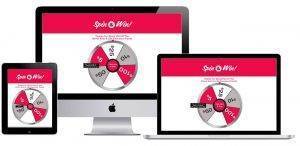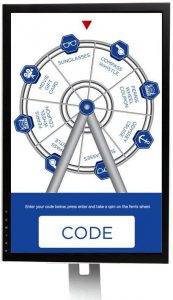To see Promotion Code example Visit Game Promotions Here!
Understanding Promotional Codes
Promotional codes—also known as promo codes, discount codes, or coupon codes—are combinations of letters and numbers that online retailers use to offer discounts or special deals. They’re a powerful tool in digital marketing strategies, designed to encourage purchases and improve customer retention. Promo codes can apply to individual products or to an entire shopping cart, d

epending on how the promotion is set up.
How Promo Codes Work
Promo codes typically offer a percentage off a purchase (like 20% off) or a fixed dollar discount (like $10 off). Some codes go beyond discounts, offering perks such as free shipping or complimentary gift-wrapping. These added incentives can nudge hesitant customers toward completing a purchase.
Microsoft defines a promotional code as an alphanumeric string used for specific campaigns—like a holiday sale or seasonal promotion.
Why Promo Codes Are Effective
 Offering a promo code creates a win-win scenario: customers enjoy savings, and businesses boost their sales. They appeal to both new and returning customers and can enhance the overall shopping experience.
Offering a promo code creates a win-win scenario: customers enjoy savings, and businesses boost their sales. They appeal to both new and returning customers and can enhance the overall shopping experience.
Interestingly, research from the Center for Neuroeconomics Studies at Claremont Graduate University found that receiving a coupon triggers the release of oxytocin—the “feel good” hormone. According to Paul J. Zak, the center’s director, “Getting a coupon, as hard as it is to believe, is physically shown to be more enjoyable than getting a gift.”
This biological response makes promo codes more than just a marketing trick—they can actually generate a positive emotional connection with your brand.
Using Promo Codes to Track Marketing Performance
 Promo codes are also a great way to measure the effectiveness of your marketing campaigns. By assigning unique codes to specific platforms or promotions, businesses can track where traffic and conversions are coming from.
Promo codes are also a great way to measure the effectiveness of your marketing campaigns. By assigning unique codes to specific platforms or promotions, businesses can track where traffic and conversions are coming from.
For example, if you run ads on Facebook, Twitter, and Pinterest, you could use separate codes like SaleFB, SaleTW, and SalePT. Even if a user doesn’t click directly through the ad, they might still enter the code later at checkout—giving you insights into what’s working.
How to Use Promo Codes on Your Website
When a shopper enters a promo code during checkout, your store’s system checks whether the requirements are met. For instance, if a code gives 20% off orders of $200 or more, it won’t activate unless the cart total hits that threshold. Promo codes can also be customized to exclude certain brands or products.
You can also control whether customers can apply multiple codes at once or just one per order. Be strategic—ensure any combinations still allow you to turn a profit.
Types of Promotional Codes
 There are three main categories of promo codes businesses can use:
There are three main categories of promo codes businesses can use:
Public Codes: Available to everyone. These are ideal for general promotions and can help attract new shoppers or re-engage past ones.
Private Codes: Intended for a specific audience—like loyal customers or first-time buyers. These targeted promotions can drive higher engagement and create a sense of exclusivity.
Restricted Codes: These are single-use codes meant for one person. For example, you might send one as a thank-you to a repeat customer or to apologize for a delayed shipment.
Using a mix of all three types helps ensure you’re connecting with a wide range of customers while tailoring offers to their behavior and preferences.

